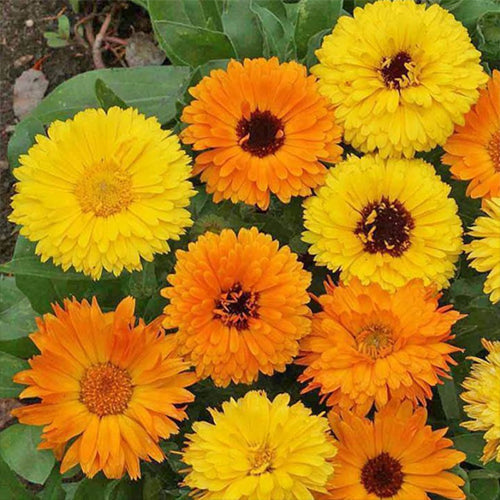
How To Grow Calendula From Seed
Share
Calendula Officinalis, also known as Pot Marigold or Common Marigold, is a flowering plant in the daisy family. If you want to add a touch of colour to your garden, or you're looking for an edible flower to use in your kitchen, Calendula is a great choice.
Calendula plant is native to the Mediterranean region, but it is now widely cultivated in many parts of the world for its colorful flowers, which range in color from yellow to orange.
Calendula officinalis is an annual flowering herb in the daisy family.
The plant grows to a height of about 12-24 inches and has slender, hairy stems with alternating, oblong to lanceolate leaves.
Calendula flowers are typically bright yellow or orange and have a diameter of about 2-3 inches.
Calendula flowers are blooming in the summer and fall and are often used in ornamental gardens.
Calendula plants flower over a long period of time, almost continuously until the first heavy frost and the flowers are great for cut flowers.
Calendula officinalis is traditionally used as a herbal remedy, and also in cuisine and cosmetics.
PLANTING GUIDE
To grow Marigold from seed indoors, follow these steps:
- Start Calendula seeds indoors about 6-8 weeks before the last frost date in your area. Fill a seed tray or pots with seed compost and water it well.
- Sow the seeds thinly and cover them with a layer of compost or vermiculite.
- Place the tray or pots in a propagator or cover them with a plastic bag to keep the soil moist and warm.
- When Calendula seedlings are large enough to handle, transplant them into 3inch (7.5cm) pots.
- When all risk of frost has passed, transplant the calendula seedlings into the garden or into larger pots. Select a sunny location with a good draining soil.
- Water the Calendula plants regularly, especially during dry spells.
To grow Calendula directly outside, follow these steps:
- Choose the Right Time: The best time to sow calendula seeds is in the spring, after the last frost date.
- Select a Location: Calendulas prefer well-draining soil and full sun. They can also be grown in containers, making them a great choice for gardeners with limited space.
- Prepare the Soil: Loosen the soil and add compost or organic matter to improve the soil’s fertility. Calendulas can grow in a wide range of soils, but they prefer soil that is slightly acidic to neutral.
- Sow the Seeds: Calendula seeds are tiny, so they should be sown thinly. Cover the seeds with a light layer of soil, then gently press down on the soil to make sure the seeds are in good contact with the soil.
- Watering: Water the soil evenly, taking care not to wash away the seeds. Calendulas prefer evenly moist soil, but they don’t like being waterlogged.
- Keep Weeds Down: Calendulas can be crowded out by weeds, so keep the area around the plants weed-free.
- Thin the Seedlings: When the seedlings have reached a few inches tall, thin them out so that each plant has enough room to grow.
- Fertilize: Calendulas are not heavy feeders, but a light application of fertilizer every 4-6 weeks will help promote healthy growth.
- Deadhead: Regular deadheading (removing spent flowers) will encourage the plant to produce more blooms. Calendula plants have the ability to self-seed; therefore, new plants may appear in the same spot the following year.
- Harvest: Calendulas are ready to be harvested as soon as the flowers have opened fully. They can be used fresh in salads, or dried for use in potpourri or as a natural dye.
By following these steps, you will be able to grow a healthy and productive calendula crop that will brighten up your garden and your kitchen.
Buy Calendula (Pot Marigold) Seeds Here:

